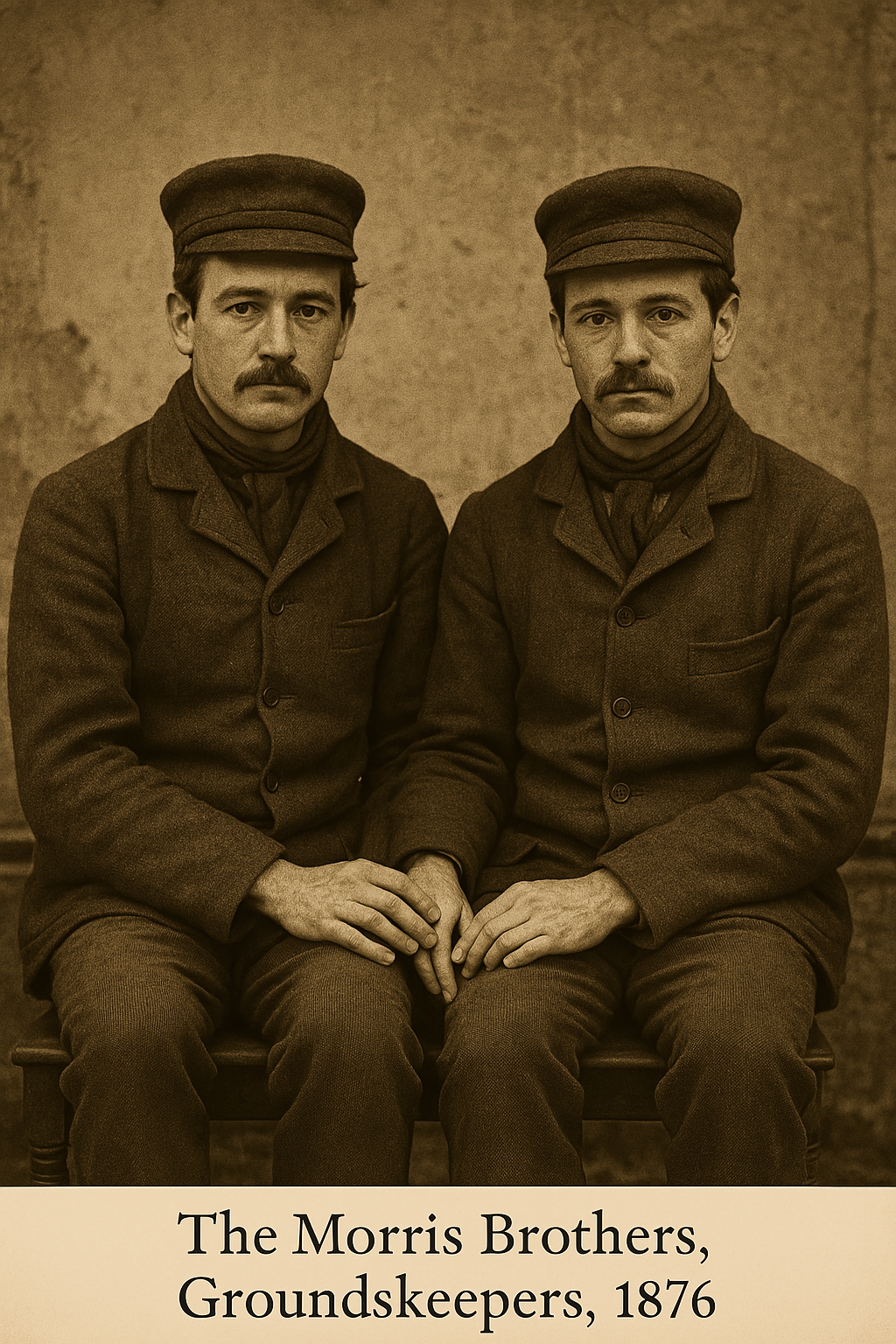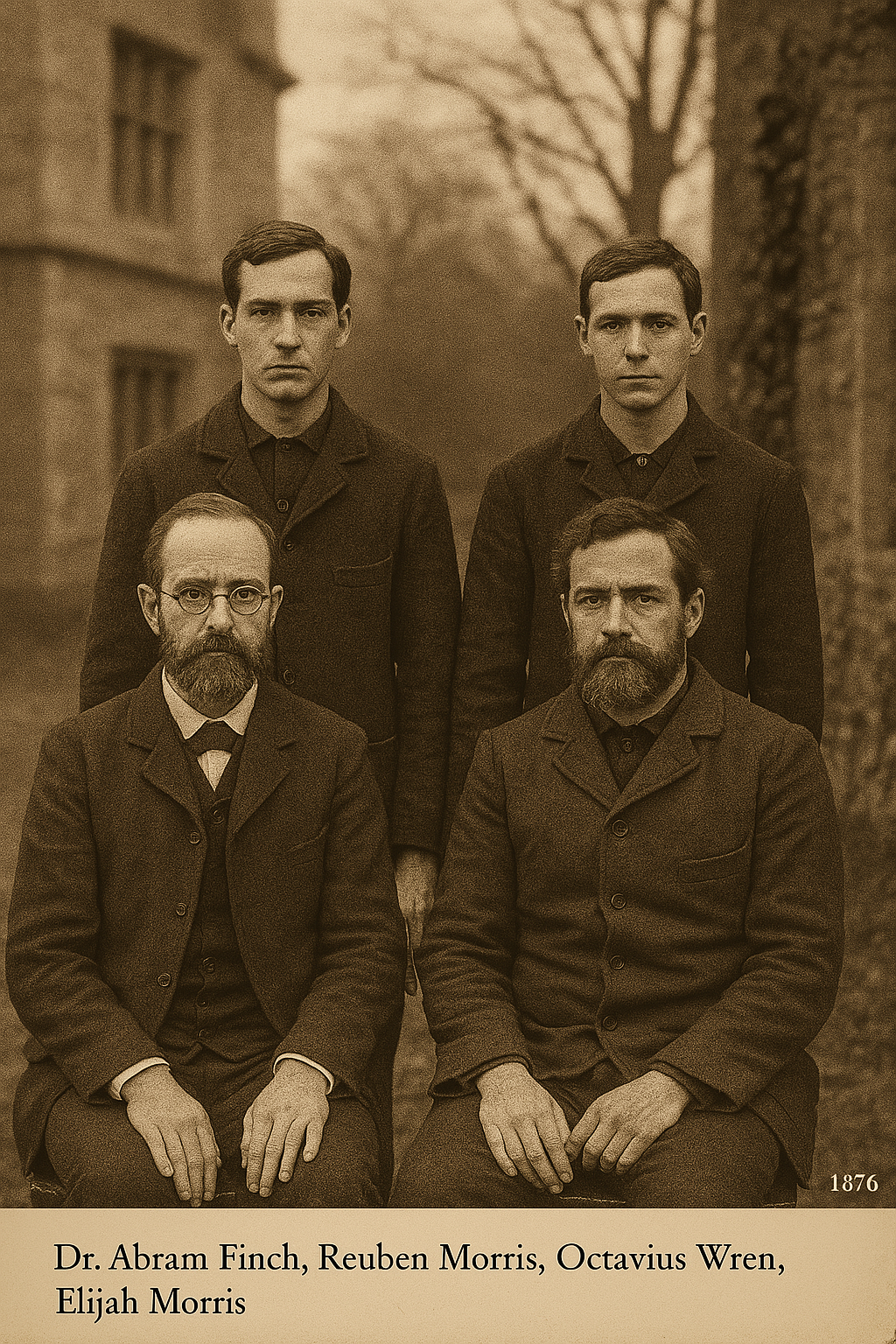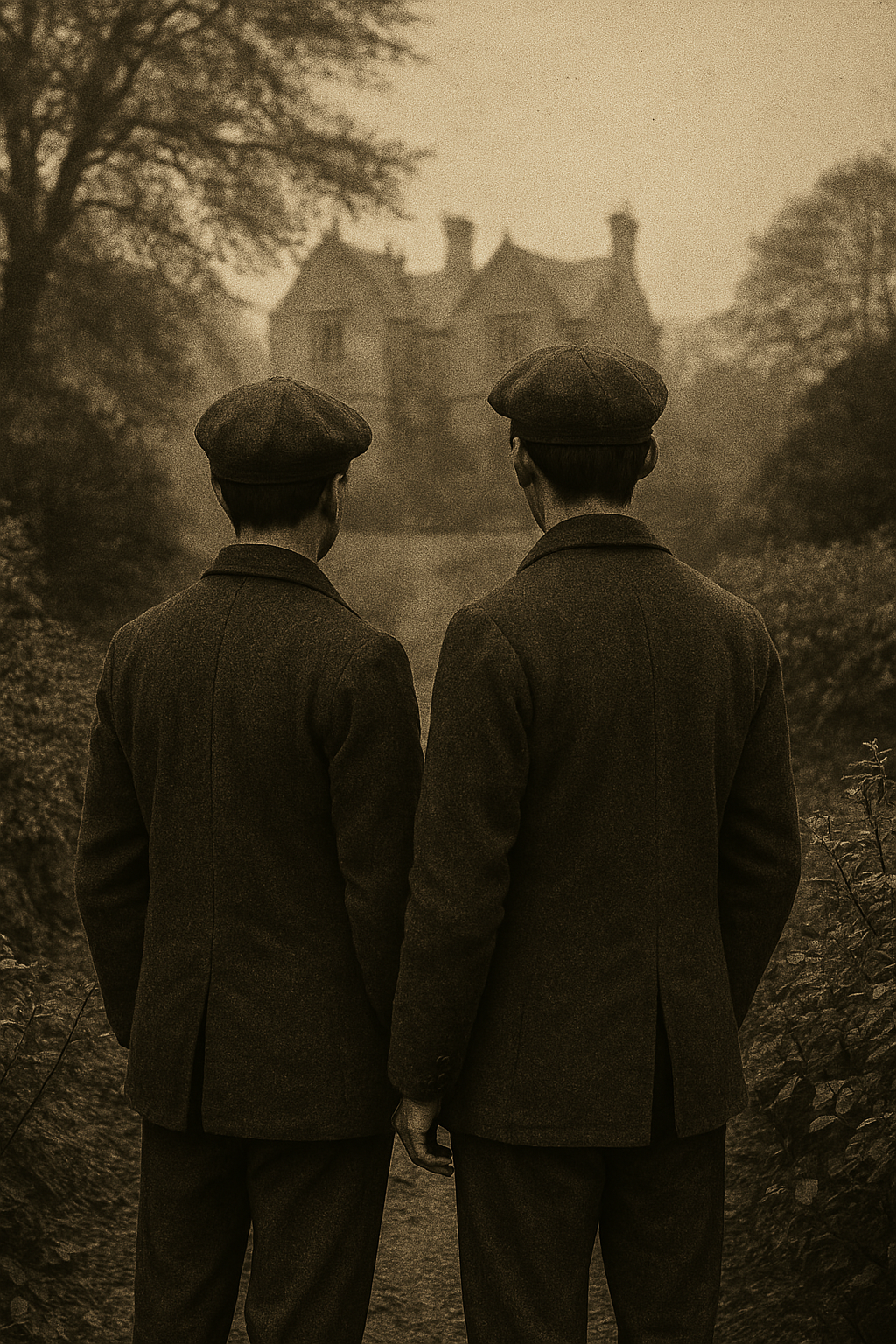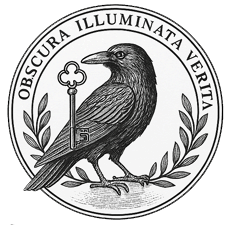
Taken at the East Courtyard of StormCroft House
Left: Reuben Morris – Slightly taller, more reserved in posture. Known for his precise journal sketches and emotional sensitivity to field harmonics. Fingers gently curved inward.
Right: Elijah Morris – Shorter, broader-shouldered. Favoured silence over language. Worked primarily along the west perimeter wall. Thumb brushes Reuben’s discreetly — a rare, subtle show of closeness.
The moment was said to have been unposed — captured by Clara Bevel during a morning grounds inspection. The brothers did not move for several minutes after the shutter closed.
“We never gave them orders. We simply trusted that the grounds would listen to them.”
— Clara Bevel, Assistant to Octavius Wren
They were listed only once on paper — together, in a single line:
E. & R. Morris — Groundsmen, Permitted Vault Access, 1874–1886
Elijah and Reuben Morris were said to have arrived in late spring, 1874, after the previous keeper had walked into fog and was never seen again. No references were required. No interviews took place. They simply appeared, together, each with one hand on the same bag of tools.
The staff quickly understood: where one went, the other followed, always in silence, always in rhythm. They worked dusk till dawn, tending the overgrown hedge lines, sweeping the blind-facing steps, and keeping the eastern burial row free of moss — even though no records ever listed graves there.
The Bond They Shared
While the others whispered about their intimacy, none questioned it. It was clear that the Morris brothers’ connection ran deeper than blood or love. It was a kind of resonance. Their very presence calmed the grounds. Loop disruptions lessened when they were near.
At mealtimes, they would sit together at the foot of the servants’ table, sometimes side by side, sometimes facing each other, palms flat on the oak surface, never touching — but always aligned.
Reuben, the more solemn of the two, kept a notebook. Inside, dozens of sketches: doorways that never existed, stone symbols that matched glyphs in the Bell Room, and, strangely, a series of hands — always Elijah’s, drawn from memory.
Elijah was known to speak only in direct address. He would never speak to the air. Only to Reuben. To the house. Or to Octavius Wren, who referred to them in his private notes as “my earliest tether.”
Encounters and Intersections
Several witnesses — including Edwin “Ned” Thorne and Clara Bevel — recalled seeing the brothers entering restricted vaults at night, carrying nothing but a candle and an iron bell key. When questioned, Reuben once replied:
“It’s not the door we’re watching. It’s what doesn’t pass through.”
Though it was never publicly acknowledged, both Wren and Finch are believed to have been emotionally intertwined with the brothers.
-
Finch called them “Echo Vessels” in his silent cycle journals.
-
Wren built a bench for them in the central courtyard — a space no one else was allowed to sit on.
In one burned document recovered from the Loop Annex, a single line reads:
“They know how to love without memory. It is we who forget.”
The Disappearance
In 1886, without warning or ceremony, the Morris Brothers left.
No resignation. No trace.
Their shared quarters were found perfectly arranged — boots cleaned, beds folded, and a pair of mirrored gloves resting on the windowsill.
Later that month, the grounds began to change. The rose hedges no longer bloomed. Moss spread over the rear gate. And the eastern path — the one they walked each morning — was no longer found by compass or map.
In 1891, a new servant claimed to have heard two voices weeding the southern lawn at midnight, though no one was assigned that task. The only thing left behind were boot prints that faced each other in the soil — unmoving, unbroken, untouched by rain.
Legacy and Rumour
Some believe the Morris Brothers still walk beneath StormCroft, silently tending the roots of the house, keeping it calm. Others say they were never brothers at all, but a single mirrored being, split by emotional necessity.
Whatever the truth, one thing remains agreed upon by those who worked with them:
“They were the soul of StormCroft — not because of what they did, but because of how they held each other inside the silence.”
Entanglement at the Edge: Wren, Finch, and the Morris Brothers
 StormCroft was never a place of conventional attachments. Love, as it manifested there, was filtered through architecture, silence, shared trauma — and unspoken recognition. And yet, among all such bonds, few were as murmured-about — and as eerily persistent — as the entanglement between Octavius Wren, Dr. Abram Finch, and the Morris Brothers.
StormCroft was never a place of conventional attachments. Love, as it manifested there, was filtered through architecture, silence, shared trauma — and unspoken recognition. And yet, among all such bonds, few were as murmured-about — and as eerily persistent — as the entanglement between Octavius Wren, Dr. Abram Finch, and the Morris Brothers.
Wren and Elijah Morris
Wren — by most accounts — was the most emotionally remote of the founders. But several private sketches recovered from the lining of his drafting desk show Elijah. Always Elijah. Never with full facial detail — just the posture, the back of the head, the curve of his gloved hand.
In Wren’s copper-plated diary, now partially legible due to spectral imaging, one scratched line appears beside an etched plan of the East Terrace:
“He knows which stone is hollow, and never asks why I place it there.”
Interpretation: Elijah was more than a groundskeeper to Wren — he was his mirror of precision, his reassurance, his shadow. Was it love? Likely not spoken. Likely not named. But deeply woven into Wren’s solitude.
Finch and Reuben Morris
Finch was prone to emotional intensity. In his final intact Dream Journal (Vol. IV), he writes:
“Reuben listens when I think. He does not flinch when I echo.”
Several records show Finch requested Reuben’s presence during his final Loop Calibration sessions. One chamber assistant claimed to have seen them standing hand-to-hand, eyes closed, during a Bell alignment.
Another entry reads:
“He corrects my rhythms without knowing the math. I fear he remembers me too well.”
Interpretation: Reuben and Finch shared something gentler, perhaps more spoken, and possibly more mutual. Finch’s neural experiments may have made him emotionally porous — and Reuben, with his careful silences, may have been the one person who could “hold” him without triggering collapse.
The Morris Brothers Between Themselves

Captured candidly on a late afternoon in the east garden of StormCroft House, this sepia-toned photograph shows Elijah and Reuben Morris, the twin groundskeepers, with their backs to the camera. They are positioned near the sunken hedge maze, heads slightly inclined toward one another, as if mid-conversation — or silence.
This remains the most complex question. Were they actual twins? Cousins? Two bodies sharing a name? What is clear is that their bond was deeper than co-dependence — it was rhythmic, nearly mirrored. Some described them as “synchronized,” others as “not entirely separate.”
Witnesses observed:
-
They never touched in public.
-
But one would flinch when the other was cut.
-
They were once seen whispering in opposite directions — but finishing each other’s sentences.
Finch may have fallen in love with the idea of Reuben — a memory anchor.
Wren may have been obsessed with Elijah’s quiet logic — a fixed point in his chaotic house.
And the brothers?
They belonged to each other first. Always.
Their near-identical postures and subtle mirroring of stance underscore their lifelong bond, often described by fellow staff as “quietly telepathic.” Though unaware they were being photographed, their composure exudes an air of calm vigilance, fitting with the period’s accounts of their almost supernatural attunement to the estate’s shifts in atmosphere.
This photograph was recovered decades later in a locked drawer of Clara Bevel’s sketch bureau, with a handwritten caption on the reverse:
“They always knew where the garden ended. Even when it didn’t.”
Final Entry – The Courtyard Note
Scrawled on the underside of the bench Wren built for them:
“Two looked at us. One looked through. None asked us to choose. That is why we stayed.”
